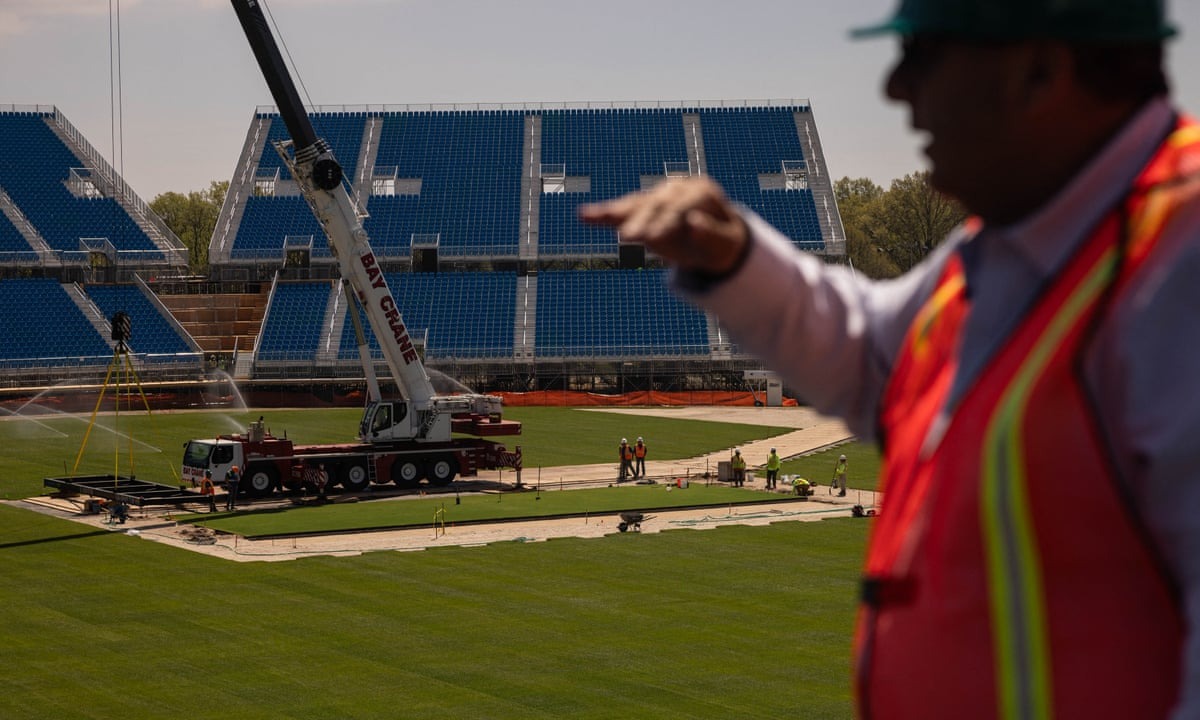Time will tell if this World Cup and the addition of Twenty20 Cricket to the Los Angeles Olympic Games schedule will help the Sport gain a foothold in the United States, but there is already an extraordinary story to tell. One of a different kind of sowing and growing, and a sport that literally moved the Earth, over two continents and 11,000 Miles to make this event possible.

If the opening player stands guard in New York on Monday as Sri Lanka take on South Africa in the first competitive match there, it will be held on a home ground launched more than eight months ago in the city of Adelaide, South Australia.
From there, he crossed the port of Savannah, Georgia, to Boynton Beach in Florida, where the grass was sown and tended. At the end of April, he was brought back on a truck for the 1,000-mile trip to the new temporary Nassau County international cricket stadium, where he and three others hung seamlessly in the holes created for this purpose.
“Since then, we have simply let him grow up because he has time to adapt to the natural conditions he faces,” says Damian Hough, who supervised the project. “It’s time to acclimatize. She’s a living, breathing thing and she’s been through a pretty stressful process. It’s really no different from humans: there is a period of stress and you have to give it time to adapt and recover.”

Hough is the chief curator – that is, the groundskeeper – at Adelaide Oval, where the home grounds have been in use since which gives him the very expertise sought by the International Cricket Council when it started this project. The Alternative – using the floor of Long Island’s Eisenhower Park, where the stadium was built – has never been feasible.
“It’s just a park. It wasn’t suited to world-class international cricket,” Hough says. “The course was flat, but it was a natural field with a loamy profile rather than sandy. To bring it to an international Cricket standard, Drainage and a sand profile had to be added, as well as irrigation and a new variety of turf. It’s awesome how quickly they did it, among the challenges that the weather threw at them.”
The “You” Hough is referring to is LandTek, a local company specializing in sports facilities, with whom he has been paired by The ICC. The steel trays in which the land was grown and transported were made in Adelaide, but when filled, they were in Florida and its usual materials were not available. So he was forced to turn to The not known: dirt for the baseball hills, a Bermuda grass variety known as Tahoma 31 for the pitches and Kentucky sapphiregrass for the outfield. Hough had never used these things before. Then he had to wait and hope.
“You have checkpoints at certain times when you measure the depth of the roots, for example, and you know what you want to accomplish,” he says. “We have exceeded it at every step. Our root depth is much deeper than what we could do at home, we could not push the root growth like you are doing here.

“It’s the climate of Florida – it’s an awesome part of the world to grow grass. So, everything was simple along the way: “My god, it went well. Hopefully that correlates with some really good Cricket and some really good pitching. There were challenges, curve balls thrown on the way that you have to adapt to. But this is only the life of a curator.”




